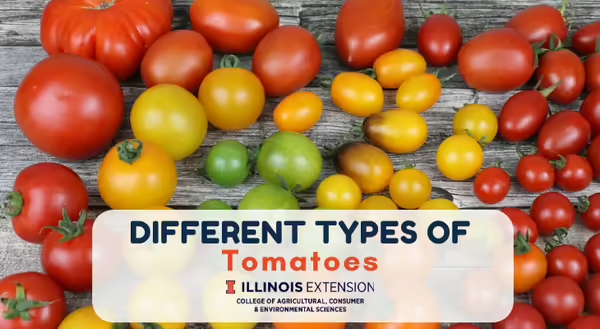
‘To-MAY-to’, “to-MAH-to’, they’re all the same, right? Well, according to Taste of Home magazine, there is a such this thing as using the right tomato for different recipes. Who knew? I guess this calls for some investigation into the different types of tomatoes.
Starting small, tomatoes that are handy to snack on are grape and cherry tomatoes. Grape tomatoes as their name implies are the shape of a grape. They often are crisp and crunchy and can range from sweet to tangy in taste. Grape tomatoes come in a range of colors and can be used in a variety of ways. These tomatoes are most commonly used in salads, but can also be roasted or best yet, enjoyed raw as a snack! Similar in size to grape tomatoes is the cherry tomato. Cherry tomatoes are more round in size than a grape tomato and have a sweetness similar to cherries. Cherry tomatoes are said to be one of the most versatilely used tomatoes; they can be cooked, grilled, sauced, or dried. An appetizer including cherry tomatoes that is always a hit is tomato, mozzarella, and basil bites. It is recommended to plant these snack tomatoes near the edge of the garden for convenient snacking!
As we approach summer and grilling season, beefsteak tomatoes make a great slicing tomato. Red beefsteak tomatoes are large and meaty with lots of juice which makes them great for sauces and dips. There are also green beefsteak tomatoes; not to be mistaken for unripe tomatoes. These tomatoes are said to have a tart and tangy taste. They can also be used on sandwiches, salsas, dips, and sauces, but what I find most interesting is they can also be used for baking and make a great substitute for Granny Smith apples! There are many different varieties of beefsteak tomatoes and are often named to represent their larger size: Beefmaster, Big Boy, Porterhouse, Bushsteak, and so many more.
An heirloom variety of beefsteak tomatoes includes the well known Brandywine; this tomato dates back to 1885. An heirloom tomato is an open pollinated, non-hybrid tomato. Heirloom tomatoes have not been bred for disease resistance; however, some cultivars have acclimated to diverse growing conditions through selection and seed saving. Heirloom tomatoes can be a wide variety of colors, shapes, flavors, and sizes. Some of the most well-known heirloom tomatoes include Big Rainbow, Brandywine, Cherokee Purple, Hillbilly, Red Current, and Yellow Pear.
For canning, roma tomatoes are a go to. Roma tomatoes are larger than cherry and grapes, but smaller than beefsteak. These tomatoes are the best of both worlds when it comes to sweetness and acidity. They have a lower water content, fewer seeds, and a dense, grainy flesh, making them great for canning or soups. They can also be used in sauces or added to salads. To tell if a roma tomato is ripe, color is the best indicator; once the tomato is red from the bottom to the top, the tomato is ready for picking. A bonus about roma tomatoes is many are fusarium and verticillium wilt resistant.
There are different options of varieties for each of these types, and they can vary whether indeterminate or determinate. For information on how to grow tomatoes check out Chris’s article. Ken also provides us with information about disease and pest control.
I don’t know about you, but I think I will grow one of each type of tomato this year just to try them all out! I may be swimming in tomatoes late this summer but thankfully some of them are good for canning.